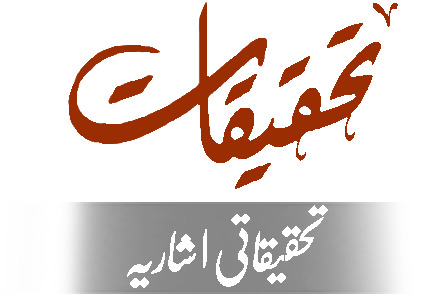تلخیص
Pediatric asthma is a growing problem
worldwide. The prevalence of asthma and
allergic conditions has markedly increased over
the last decades due to rapid industrialization
and urbanization. Asthma is a global issue that
results in absence from school, socioeconomic
burden on the family and psychological effects
on the child as well as the caregivers. It is a major
health problem that affects as many as 300
million people worldwide that could increase by
further 100 million by 20251.
In Pakistan, the burden of asthma and allergic
conditions are increasing day by day. Regarding
prevalence of asthma in Pakistani children, a
research done in 1997 revealed that 10% of
children were suffering from this condition. The
study was repeated in 2006 and it was found out
that the prevalence increased to 18% among
children of 13 to14-year age group2. However,
according to the Global Initiative for Asthma
(GINA), prevalence of asthma in Pakistan is 4-5%.
All asthma guidelines like the ones developed by
GINA have an important component of
education regarding care givers and doctors3.
There are relatively few local studies on
childhood asthma, hence there is a gap in
information about the risk factors that may be
associated with asthma in children in our local
setup. Family history of asthma, increasing
urbanization, cigarette smoke and increasing
environmental pollution may be among other
factors responsible for precipitation of this
disease.
The objective of management of childhood
asthma is to minimize impairment of activities and
reduction of risk of exacerbations. Initial
assessment of these children should be targeted
towards frequency of symptom, timing and effect
on activities. This helps to classify the degree of
severity as intermittent, mild persistent, moderate
persistent, or severe persistent. The four basic
elements of management are continuous
assessment and monitoring, education of
patients, environmental triggers, control and
suitable use of medication. Short–acting inhaled
β2-adrenergic receptor agonists such as
salbutamol are the backbone of therapy in
acute stage in an episode of
bronchoconstriction. Systemic steroids and
anticholinergics drugs such as ipratropium
bromide are important components of managing
an acute exacerbation. Refractory cases are
managed by adrenalin, terbutaline and
magnesium sulfate. Children may need daily
controller medications for which inhaled
corticosteroids are the very effective.
Leukotriene–receptor antagonists, long – acting
β2-agonists, and mast cell stabilizers are the
medicines used for control of asthma. Visits
should be scheduled frequently in the outpatient
setting to reassess symptom severity, adjust
medications accordingly, and emphasize patient
education. If the child does not improve with
these medications, increasing the dose is
considered only after assessing the patient’s
adherence and technique with medications.
After 3 months of adequate control of symptoms
stepping down the treatment is considered.
However, if the patient is not improving after
standard treatment, one may consider to refer
that child to a pulmonologist.
Pediatricians have a very important role in
diagnosis and management of children with
asthma and allergic conditions. It is mandatory
for pediatrician to have basic background
knowledge of the disease. The pediatrician
should identify the risk factors in every asthmatic
child and guide the caregivers regarding its
prevention. With early diagnosis, prompt
management and follow up, the disease
burdenwill markedly decrease.
Humayun Iqbal Khan. (2016) Childhood Asthma: Global and Local Perspective , Pakistan Pediatric Journal, Volume 40, Issue 3.
-
Views
913 -
Downloads
113


